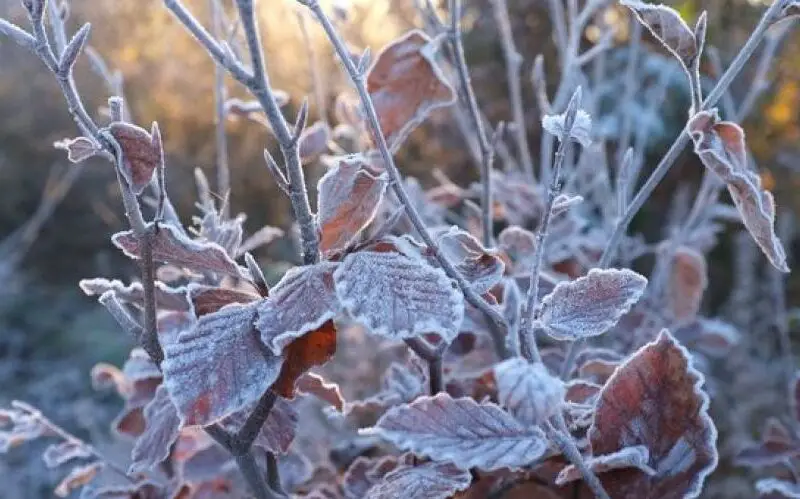The thermometer goes down, and you are afraid for your fragile plants? Before swaddling everything, ask yourself if it’s really useful. The answer is not so simple. You all know the idea of bubble wrap, but also think about protecting your plants from wind and humidity because these are all factors that can threaten them in the coldest of winters. And make a distinction between pot plants and plants in the ground.
It is important to protect them from frost and cold to find them in spring in the best conditions!
A few simple protective gestures allow you to protect them easily and at a lower cost.
Contents
A more difficult task you might think
One thing is sure: protecting your plants is more complex than it seems. And a picture showing you how to wrap plastic bubble wrap around a palm tree is not going to help! Sometimes, this type of protection is worse than cold because the confinement causes condensation or mold that causes the plant to die.
In fact, some plants known to be fragile can very well spend the winter outside, even in regions known to be cold. And if we look a little further than the common plants, we find similar species or varieties that are much more resistant to the cold.
The plants concerned
The plants to be protected from low temperatures are those known as non-hardy. These plants, whether they are in the ground or in pots, will need an effective solution to protect them and insulate them from the cold as much as possible throughout the winter period. For some of them, a thick layer of mulch can be added to their foot, others will be covered with a wintering veil or any other winter protection on their aerial parts.
The wintering of the plants concerns :
- Tropical flowering plants: hibiscus and orchids. These are the least tolerant, to be brought in or protected from early fall, that is to say mid-September, when temperatures are close to 50°F, to be placed in a luminous room where the temperature is not lower than 50°F, such as a veranda. In the case of orchids from temperate climates, such as Dendrobium and Cymbidium… a stay outdoors is beneficial for the next flowering period.
- Mediterranean and orangery plants: oleander, pelargonium, banana, palm, bird of paradise, bougainvillea, citrus, lantana…. Protect them at the time of the first frosts (mid-October, mid-November). Put the ones in a bin in a cool and airy place such as a garage or cellar, with a little light.
- Cactus: to be brought in very early (at the same time as the tropical plants), preferably in a cool and bright room.
- The other plants gelives: geraniums, fuchsias, daturas, summer bulbs…
For all these plants, the watering will be limited to the strict minimum to maintain a very light humidity, even absent as for the cacti.
Protection of persistent plants
The same is not true for persistent plants whose vegetation is only slowed down at this period.
They continue to require some care, especially in relation to frosts.
In case of frost, the water present in the sap crystallizes, implies the increase in the volume of the sap and thus makes the cells burst.
Fortunately, the slightest frost will not cause the plant to die.
It will often take a very cold and prolonged period to endanger its life.
But it also depends a lot on the plants, so you should ask about their frost resistance.
Protecting outdoor plants
They can be protected by a simple plant mulch such as bark, flax mulch, a carpet of dead leaves, a few centimeters of compost or manure.
By protecting your perennials and young shrubs in this way, you ensure that their roots are protected against frost.
All plant mulches also have the advantage of being good fertilizers.
This protection will attenuate the effect of frost by protecting the root system in particular.
Shrubs can be wrapped in a protective canvas called a winter cover that will protect their antlers.
Protecting plants in tubs and pots
They are the most exposed to frost because the entire surface of the pot is in contact with the air.
It is important to place your potted plants in a place that is best protected from the cold and wind.
The trick is to look where the dead leaves pile up on your terrace because that’s usually where there is no wind to move them…
Protecting plants in greenhouses
To protect plants in the middle of winter, a greenhouse must be kept frost-free as a minimum. Heating becomes necessary in the coldest regions. The electric heater is simple to install, if you have provided a sufficiently powerful power supply, and easy to use thanks to an integrated thermostat. A blower model homogenizes the temperature inside the greenhouse, avoiding the creation of hot and cold zones.
In the coldest regions, it makes sense to insulate your greenhouse. If it is not equipped with double glazing, use bubble plastic fixed to the glass inside with double-sided adhesive or specific clamps, taking care of the connection areas.
It is also a good idea to place polystyrene panels (sold in DIY stores) or wooden boards at the base of the glass walls. This limits heat loss at ground level and provides long-lasting insulation.
6 other methods to protect your plants against frost
Straw mattress
Spread a 5 to 10 inch layer of insulating material – straw, hay, dead leaves, ferns, or crushed twigs – on the ground around the plant to be protected and on the surface occupied by the roots.
Under a veil
Well wrapped up under a winter fleece veil, the not very hardy shrubs benefit from a few precious extra degrees that are enough to ensure their survival. If you don’t have this equipment, a perforated or bubble plastic can also provide sufficient protection against the cold. However, condensation on the foliage can cause disease.
Sleeve to be padded
A protection mounted on arches or maintained by stakes surrounds certain fragile and bald trunks, for example those of tree ferns, palms or fig trees. It can be a plastic, a veil, a burlap or more simply a fence. Some models are commercially available, the others can be made quite easily, before heavy frosts.
Against humidity
Cacti, succulents and many rock plants are more afraid of humidity and rain than cold, if it is dry. A well-drained soil is not always enough for them. Use glass, transparent plates or old windows, or even opaque materials, to provide adequate protection above these plants whose aerial parts die before winter.
Tactical Grouping
The south-facing walls store heat during the day and release it at night, thus reducing temperature variations. An awning will increase this protection and keep the soil dry, which ensures a better rusticity. It’s up to the gardener to water from time to time! The corner of a terrace or a hedge will act as a valuable windbreak and shelter; however, they are less effective.
Frost-free
Potted plants sensitive to cold, some bulbs or semi-hardy plants are placed in a frost-free room, at a higher or lower temperature, with a more or less intense light. Depending on the plants and the space available, a cellar, a garage, a basement, an outbuilding, an unheated room or, ideally, a veranda will be used as a refuge.
Summary
While many of them are resistant, not all plants are! Some of the more fragile varieties need to be moved, covered or cared for to cope with the coldest months of the year. But what type of protection to provide depending on the plants?
First, shelter the most fragile plants (bougainvillea, hibiscus, pelargonium, fuchsia, oleander, azalea, citrus and cacti). Change your pots avoiding terracotta, sensitive to frost.
We also offer you more than 6 methods to protect your plants against frost in winter.









